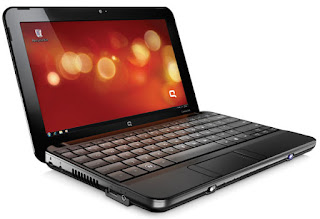If its engineers hew to recent history,
Apple's tablet computer may look nothing like what the prognosticators foresee.
The speculative madness surrounding
Apple's rumored tablet computer has finally reached its frothy peak.
Tech's chattering classes are
obsessed with the unconfirmed product, which
Apple (AAPL) may announce at an event in January, or February, or March, depending on which set of reports you adhere to.
Apple, not surprisingly, is mum.
The hunger for information—and misguided speculation—reminds me of the mistaken prognosticating about the iPhone before its introduction three years ago. It may be time to step back and realize that
Apple may uncork a product so surprising that the company again leaves the tech industry scrambling to catch up to its products' smooth operation and sleek design.
Documented facts about the tablet are few. This much we do know: In November 2008, Apple took control of the trademark name TabletMac from a company called Axiotron, which converts
MacBook laptops into tablet computers running
Apple's Mac OS X.
In April, BusinessWeek talked with people who had seen prototypes of a device they called a media pad as well as a small iPhone, described as "
iPhone lite" by the person who saw it.
Then there's outside speculation. In November the Taiwanese Web site Digitimes, often regarded as a solid source of information regarding the plans of Taiwan's electronic manufacturing sector, reported that the Apple tablet had been delayed until the second half of 2010 because of the price to build its display.
On Dec. 24, New York Times blogger Nick Bilton quoted two people—one an unnamed source, the other a former Apple employee—dropping tantalizing clues. Jobs is "very happy" with the machine, and users will be "very surprised at how you interact with the new tablet," the Times wrote. About the same time, the Financial Times reported that Apple plans to reveal the new device at an event at the Yerba Buena Center for the Arts in San Francisco on Jan. 26.
Missing the Mark on the
iPhoneIt's important to take reports like these with an appropriate helping of salt.
Apple holds numerous trademarks it doesn't actively use; ever hear of MacTel, Vingle, or Drypod? In addition, Apple's top-secret labs in Cupertino, Calif., have probably developed numerous tablet prototypes, some of which may be used to show potential partners but that don't represent a finished product. And leakers have a tendency to exaggerate what they know, or invent from whole cloth.
A similar speculative frenzy surrounded the January 2007
iPhone launch. Looking back at Apple rumor site postings in the months leading up to its debut, I noticed how far off the mark many were about the iPhone's looks,
Apple's partners, and who the carrier would be who could resell it. For example, enthusiasts' home-made design drawings that emerged on rumor sites showed a phone that sported a navigation wheel similar to the iPod's. Others imagined the iPhone would have a slide-out keyboard.
Few saw the potential for a touch-sensitive display, which eventually became the signature design element of the iPhone and iPod touch.
Consider the fevered imaginings endemic to
Apple. The company engenders such strong reactions from its customers that users tend to "project the known upon the unknown," says Michael Gartenberg, an analyst at market researcher Interpret. That's why so many observers took the well-understood iPod and grafted a phone onto it when imagining Apple's
iPhone plans.
A Larger Screen?
Apple's tablet may revolve around a larger touch-sensitive screen than the iPhone's, which could be central to its design and control. I've speculated about it myself in a past column. The
iPod touch is so useful an Internet device that I keep one handy on my bedside table. It would make a lot of sense for Apple to market a device with a larger screen—say, 7 in. to 10 in. diagonally—that runs applications downloaded from the iTunes app store, wouldn't it?
Writers and tech pundits think so. But we're not Apple engineers and designers. What seems from the outside to be a logical progression may seem merely simplistic to the folks at Apple's 1 Infinite Loop headquarters. Their job isn't so much to think about the next logical step on a path as to set a divergent course for what people are likely to want for years to come.
Apple may throw everyone a curve ball here. Imagine an Apple tablet about the size of a 11-in. spiral notebook with an iPhone-like touch screen. How about the ability for the machine to recognize voice commands and dictation of text? A built-in video camera and maybe a mini-projector for meetings would be nice. And if the reports of Apple's discussion to land print media content in the iTunes store are true, how about an easy-on-the-eyes display for reading electronic magazines and books?
Embracing Two Worlds
A more fundamental question is whether Apple's tablet will more closely resemble an
iPhone or a
Mac. It will be fascinating to see how whatever emerges straddles those two worlds.
We use PCs and laptops to get things done when we're stationary; we use mobile devices to stay informed and complete small tasks when we're out and about. This device, it seems, will either have to incorporate both paradigms or have to create one of its own.
My bet? There will be a product from Apple reasonably described as a tablet, and
Apple will reveal it during the first quarter of 2010. That's not going too far out on a limb. As the iPhone enters its third year, Apple needs something new to sell to keep delighting its customers, inspiring envy among its competitors, and increasing its sales.
Check your expectations about this product at the door, though. We're probably all in for a very big surprise.



































